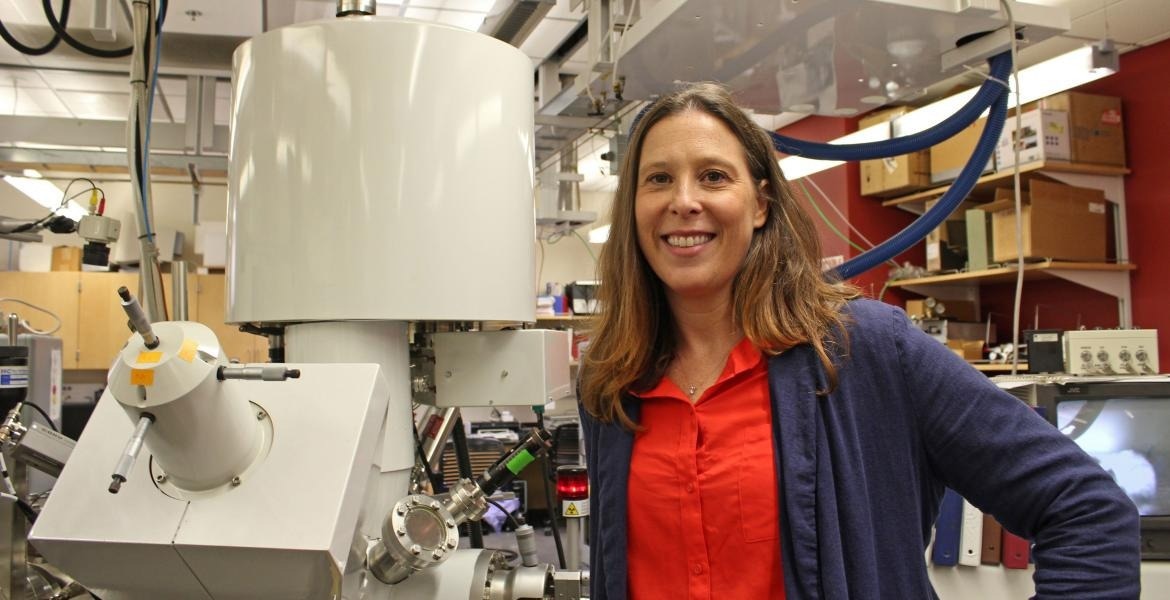The use of different energy sources, especially solar, strengthens the nation’s energy system. According to the US Energy Information Administration, solar energy accounts for around 3% of total power generation in the United States and about 9% in Arizona.
 Erin Ratcliff, associate professor of chemical and environmental engineering at the University of Arizona, received $300,000 from the US Department of Energy Solar Energy Technologies Office to advance perovskite solar cells. Image Credit: University of Arizona College of Engineering.
Erin Ratcliff, associate professor of chemical and environmental engineering at the University of Arizona, received $300,000 from the US Department of Energy Solar Energy Technologies Office to advance perovskite solar cells. Image Credit: University of Arizona College of Engineering.
The US Department of Energy Solar Energy Technologies Office (SETO) has awarded a $300,000 grant to University of Arizona chemical and environmental engineering associate professor Erin Ratcliff to increase the near-term scalability of a kind of solar cell known as perovskites.
Perovskite is a mineral, although the term also refers to laboratory-created materials that mimic the crystals’ particular crystalline structure. This structure provides perovskite features like photoconductivity and even enables them to be formed into inks and printed on ultra-thin, flexible strips of plastic, similar to how newspapers are printed.
A solar panel so small and portable that it can be folded up like a yoga mat opens up a whole new world of possibilities for what may be fueled by the sun, from avionics to wearables to technologies required in rural regions or disaster circumstances.
The perovskite sector is promising and rapidly expanding, with efficiency increasing from roughly 3% in 2009 to more than 25% presently. However, like with much promising new technology, perovskites still have some quirks to sort out. They are not particularly stable, in part due to temperature sensitivity, which causes them to decay over time.
The first perovskite devices that were developed only lasted a few minutes or hours, but now they can last months. The ultimate goal is to develop devices that can last for decades. Thus, scientists and engineers are striving to figure out what it is that causes the cells to become unstable.
Perovskites are the highest-performing printable solar cell technology. But the operating hypothesis in the field is that defects are contributing to instability.
Erin Ratcliff, Associate Professor, Department of Chemical and Environmental Engineering, University of Arizona
Ratcliff and her research colleagues will use the SETO award to create a system for identifying these faults during manufacture. The low-cost, scalable technology will help scientists understand how various manufacturing process components and materials contribute to errors and instability and how to reduce these impacts.
The funding is part of SETO’s Small Innovative Projects in Solar 2022 Funding Program, which rewards focused, early-stage projects in solar energy research that have the potential to yield substantial findings within the first year of operation. A total of $5 million was allocated to 19 projects.
What our project is about is trying to develop an in-line characterization tool to get you a quality control assessment to tell you how good the layers are in the exact moments you’re making them. This quality control method is also an indication for the long-term stability of the materials you’re making.
Erin Ratcliff, Associate Professor, Department of Chemical and Environmental Engineering, University of Arizona
Current methods for identifying faults are only employed after the material has been manufactured. A technician may flash a light on the material to examine how it responds, for example. Ratcliff is working on an electrochemical approach.
In addition to detecting faults during production, the approach may provide a more nuanced view of the probable existence of defects. It will include employing a robotic arm to apply a thin substance, roughly the thickness of cellophane, on a solar panel that is being made.
You stick it on there and you apply an electric field on [the manufacturing] line, and you can figure out how it works under operation, without having to make the whole device first.
Erin Ratcliff, Associate Professor, Department of Chemical and Environmental Engineering, University of Arizona
The Office of Naval Research is funding Ratcliff’s defect quantification research. Ratcliff is also involved with Tech Launch Arizona, a UArizona office that commercializes technologies that stem from university research.
“Large-scale manufacturing of these robust, high-quality perovskite-based photovoltaics will require low-cost and practical quality control methods that can be integrated into an operating line. Ratcliff’s approach is overcoming these challenges and making the technology much more attractive in a marketplace that’s demanding higher and higher performance,” stated Laura Silva, senior licensing manager for Tech Launch Arizona’s College of Science.
Roger Angel, a UArizona professor of astronomy and optical sciences, got $400,000 in SETO funding to create a mechanism for adjusting the curvature of a mirror during the day to best catch the sun’s energy.